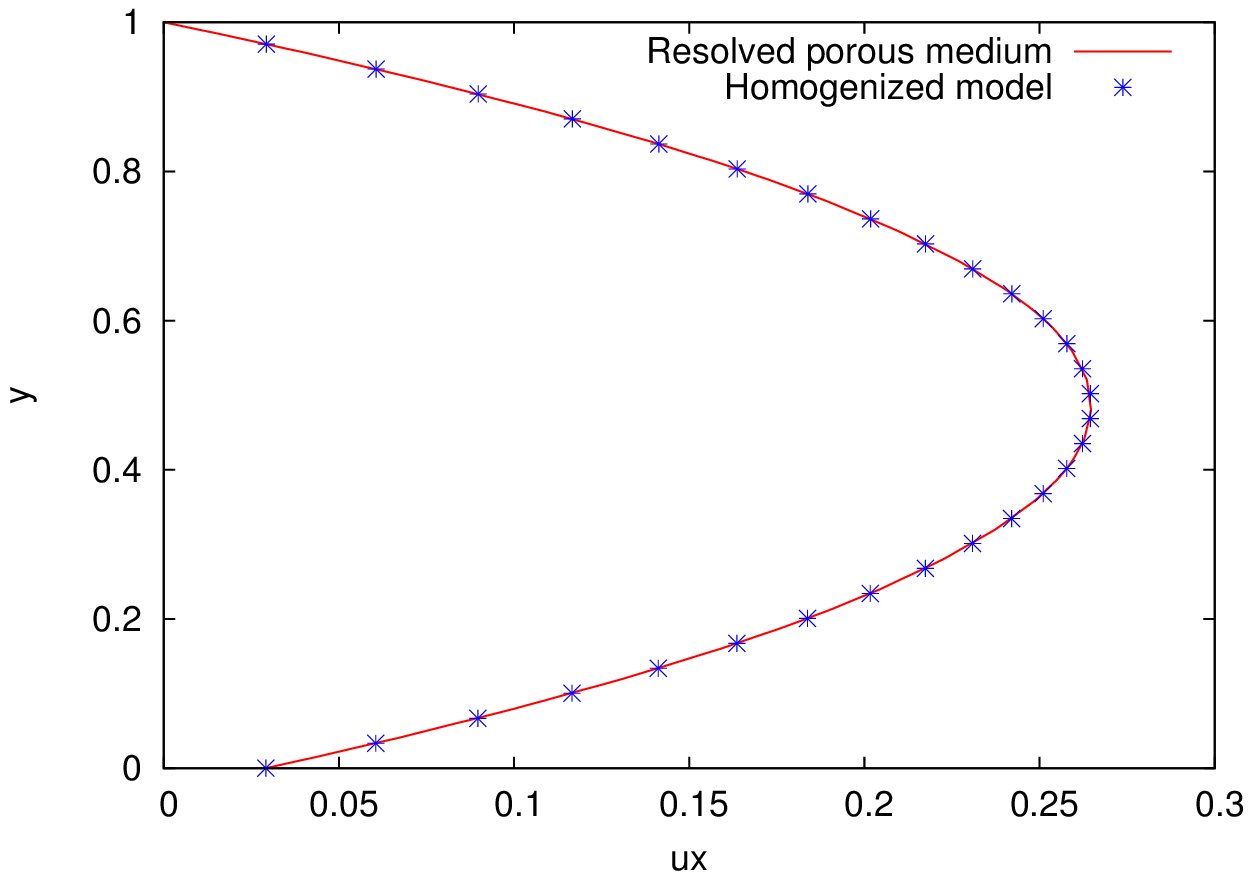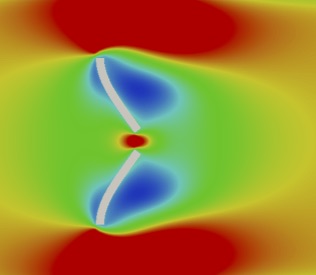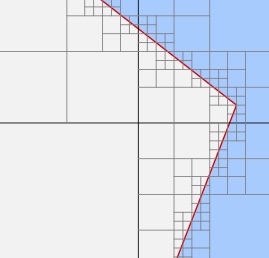Research: Computational mechanics
Multiscale modeling of flow over porous walls
 |
We develop a strongly coupled partitioned approach to simulate fluid flows over porous materials. The Navier-Stokes equations governing the fluid flow, and the Darcy model describing the flow within porous media are coupled using the boundary condition derived using multiscale homogenization approach. The uniqueness of our approach is that it is free of any empirical constants associated with the interface boundary conditions. Higher order spectral element method is used to discretize both domains and the method is being implemented in the open-source code Nek5000. |
Fluid-structure fracture interaction
 |
Vast majority of the computational methodologies developed to model the fluid-structure interaction (FSI) assume that when the structure interacts with the fluid, it deforms completely within the elastic limit. They preclude not only any plastic deformation but also the failure by fracture. In a variety of natural phenomena and engineering applications, the fluid-induced loads on the structure are large enough to enable the initiation and propagation of cracks, which may ultimately result in catastrophic failure of the structure. This occurrence is termed as fluid- structure-fracture interaction, and the objective of this work is to devise a computational approach to model such coupled multi physics phenomena. Two essential features are introduced: possibility of crack initiation and propagation within the structure due to fluid loads, and the mutual interaction of crack surfaces with the fluid entering the crack. We simulated an example involving a structure breaking completely into two parts, of which one is carried away by the flow. |
Fixed-grid methods
 |
One of the crucial step that dictates the accuracy and robustness of such methods is the accuracy of weak form integration. In contrast to body-fitted methods, the interfaces in fixed grid methods are not aligned along the edges of the background mesh. The interface cuts the background mesh's elements in an arbitrary manner. Over these cut elements the weak form must be integrated in the region that is located within the fluid part. This requires accurate numerical integration strategies that work for arbitrary complex polyhedra. The most widely used volume decomposition based methods fail at certain critical cut configurations and the simulation crashes. To address this issue, two new numerical integration strategies, namely the generalized moment fitting method and the direct divergence method are developed in this work. Both methods are designed to work in situations, where the integrand is not explicitly prespecified. This is essential for their applications in FEM. Moreover, they can handle convex as well as concave shaped polyhedra. Numerical examples demonstrate that the direct divergence method is the most accurate and posses superior robustness characteristics when compared to all other available methods. Recently developed quadrature compression techniques are utilized to speedup the computations. |
Fracture of nonlinear solids
 |
A mesh refitting approach is developed to simulate brittle fracture of an isotropic homogeneous nonlinear hyperelastic material. A two step mesh-modification algorithm is utilized to deal with the topology change introduced in the structural domain due to the crack propagation. First, the nodes are repositioned in such a way that the crack propagates along an existing edge in the new mesh. Then, if necessary, the element connectivity is locally modified in order to preserve the mesh quality. The excellent performance of this method is demonstrated by simulating single and multiple crack propagation examples of varying complexity and comparing the results with those available in the literature. |